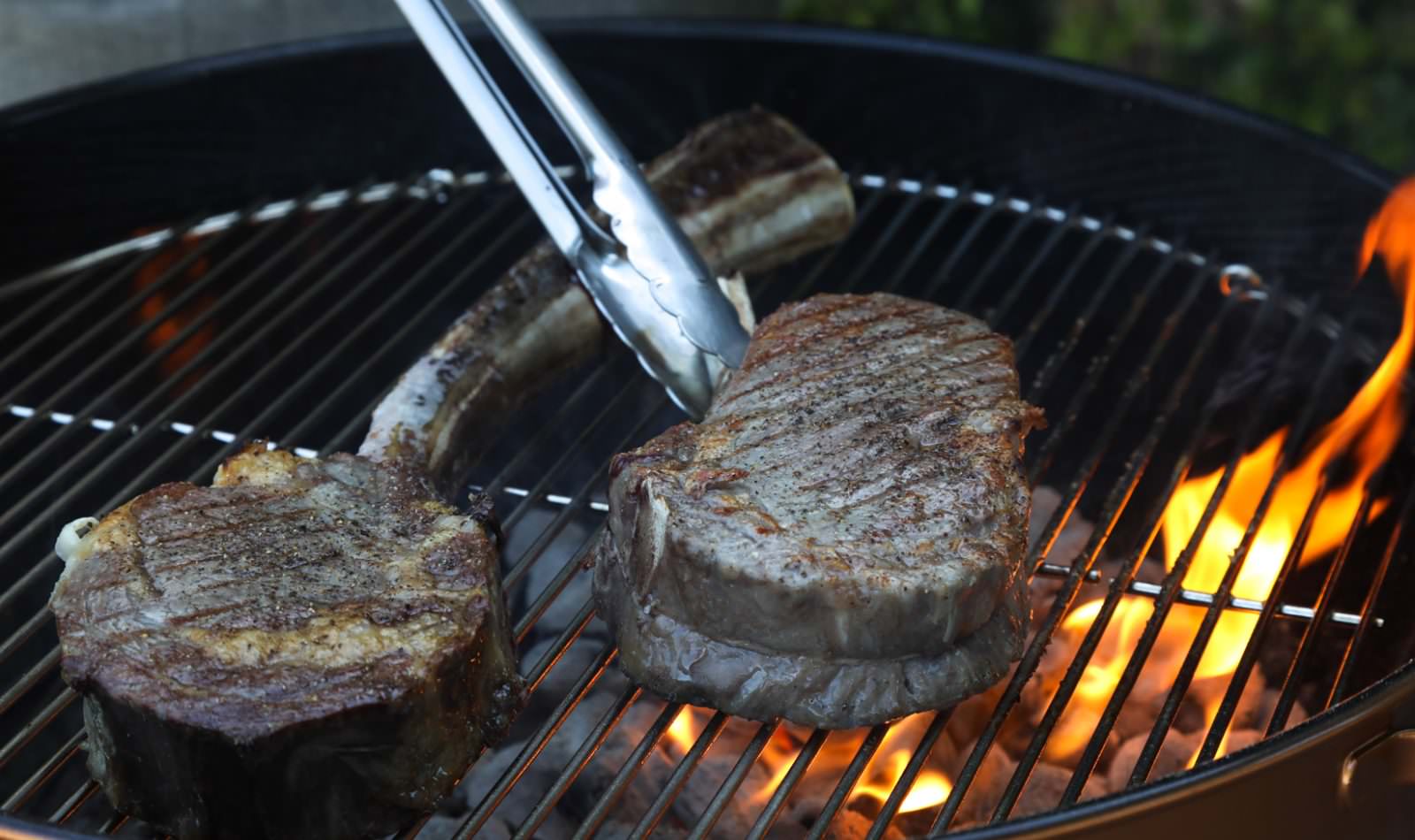
Top 10 Tips for Pairing Cabernet Sauvignon with Steak
A chef’s guide to finding the perfect wine for your favorite cut of beef
Does a glass of silky cabernet sauvignon always taste its best with an expertly grilled steak? We decided to put America’s most beloved food and wine pairing to the test and study how different styles of cabernet sauvignon pair with different cuts of beef. Young, old, soft or powerful cabernets—which would be the best pairing for filet mignon, ribeye and other favorite steaks? And why do tannic red wines taste so good with steak?
The result of “research” at three different restaurants is Ten Tips for Pairing Cabernet Sauvignon Wine with Steak.
Before diving into this advice, it’s important to understand what happens to our taste buds once this carnivorous marriage meets our lips. A big part of what makes cabernet and steak such a natural food and wine pairing is grounded in chemistry—and I don’t mean that romantic conversation over a candlelit dinner—though it helps. The tannins found in grape skins and wine barrels contribute two characteristics on your taste buds: bitterness and astringency. Tannins bind with proteins and fats ferociously, and steaks are protein-rich and fat-heavy foods (though some cuts have less fat than others, as noted below). This means high-tannin red wines pair well with high-protein foods. When we take a sip of a tannic red, the tannins in the wine bind to natural saliva proteins in our mouths, making the wine taste less astringent. When we combine this sensory reaction with a juicy bite of steak, the wine’s tannins also bind with the protein and fat in the steak, making the wine taste softer, smoother. Basically, fats wash away the tannins on your tongue. A wine’s acid also cuts the fat in food, and a steak’s chargrilled edge mirrors the wine’s tannin. You can find a detailed steak and cabernet pairing guide with tasting notes and an overview of each cut of beef on our winery blog. Serious Eats has a cool, interactive guide to finding the perfect cut of steak, including recipes.
10 Tips for Pairing Cabernet Sauvignon with Steak:
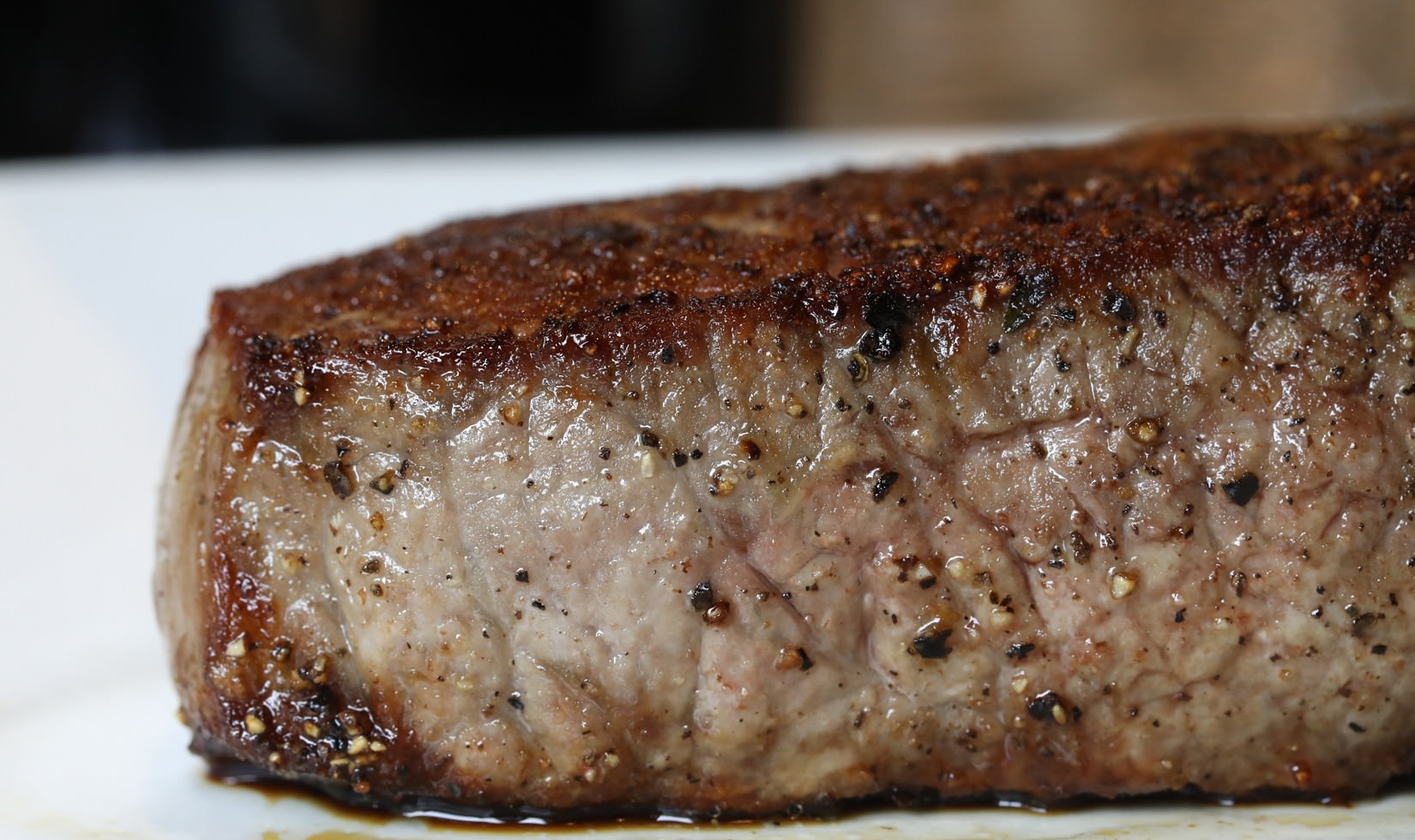
New York Strip is the most versatile steak for pairing with different styles of cabernet sauvignon. The Strip is mid-range in texture, flavor and fat, which contributes to its versatility.
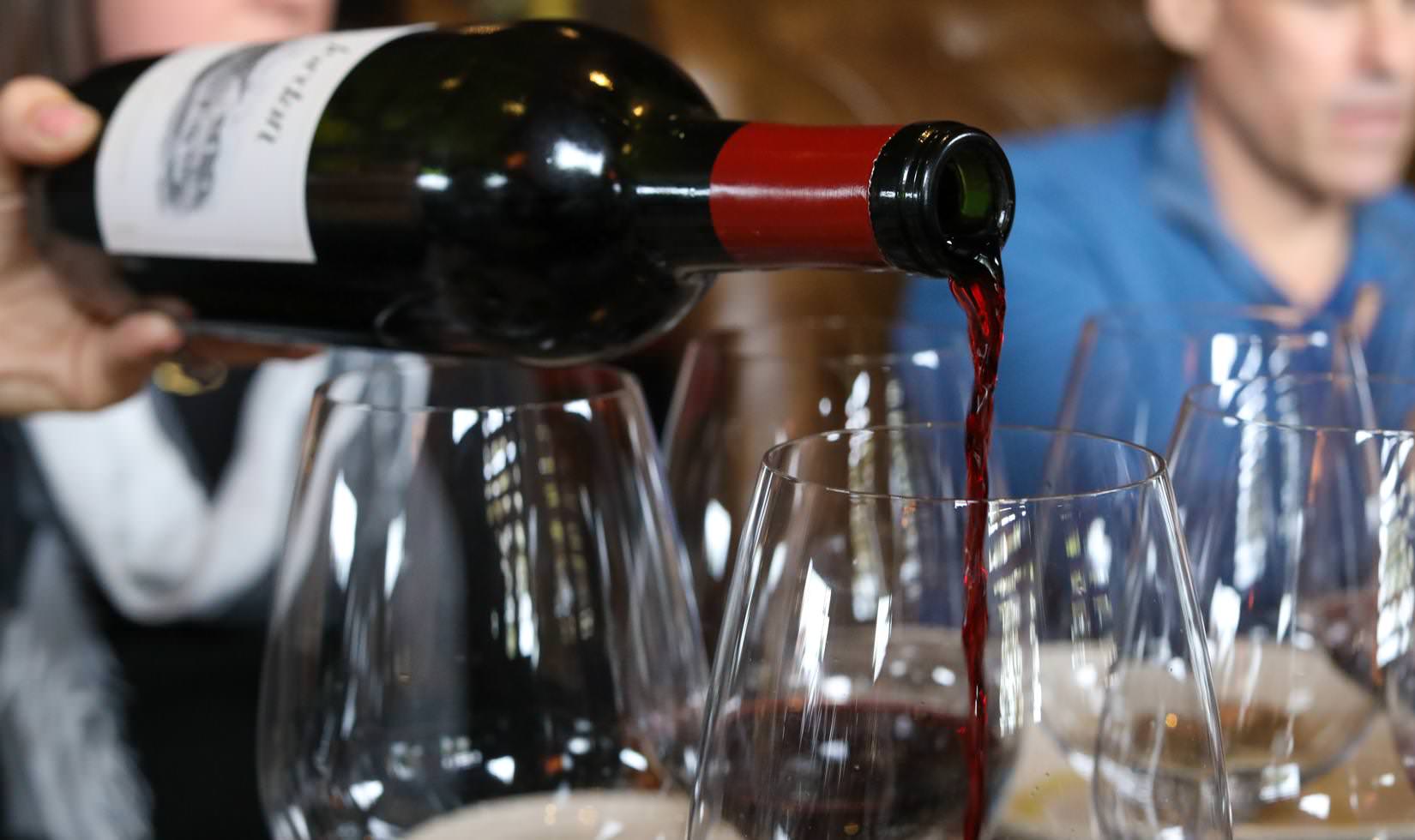
Red wines with a good backbone of acidity contrast with the texture of rich meats, such as filet and ribeye.
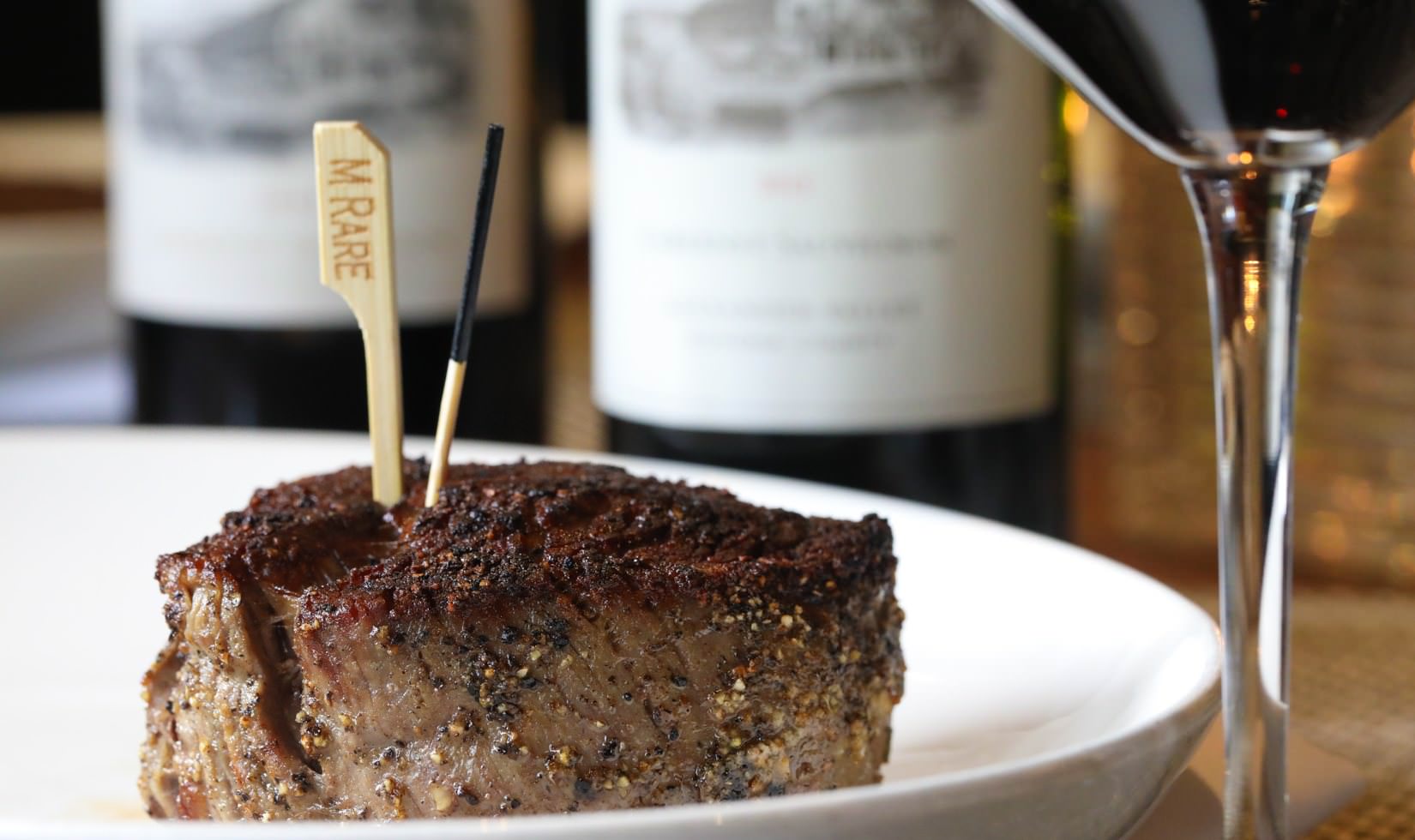
Leaner cuts of beef, such as filet mignon, pair best with a leaner style of cabernet. Filet doesn’t have enough fat or beef flavor to stand up to a highly tannic, high-alcohol cabernet ; the wine overshadows the food. Cabernets with high alcohol and lower acidity can taste sweet or astringent with a subtle cut like filet mignon.

Fattier meats, such as ribeye, pair nicely with bold red wines that have ample tannin . The tannin acts as an astringent, cleansing the palate of the fattiness that coats our palates after a juicy bite of steak.
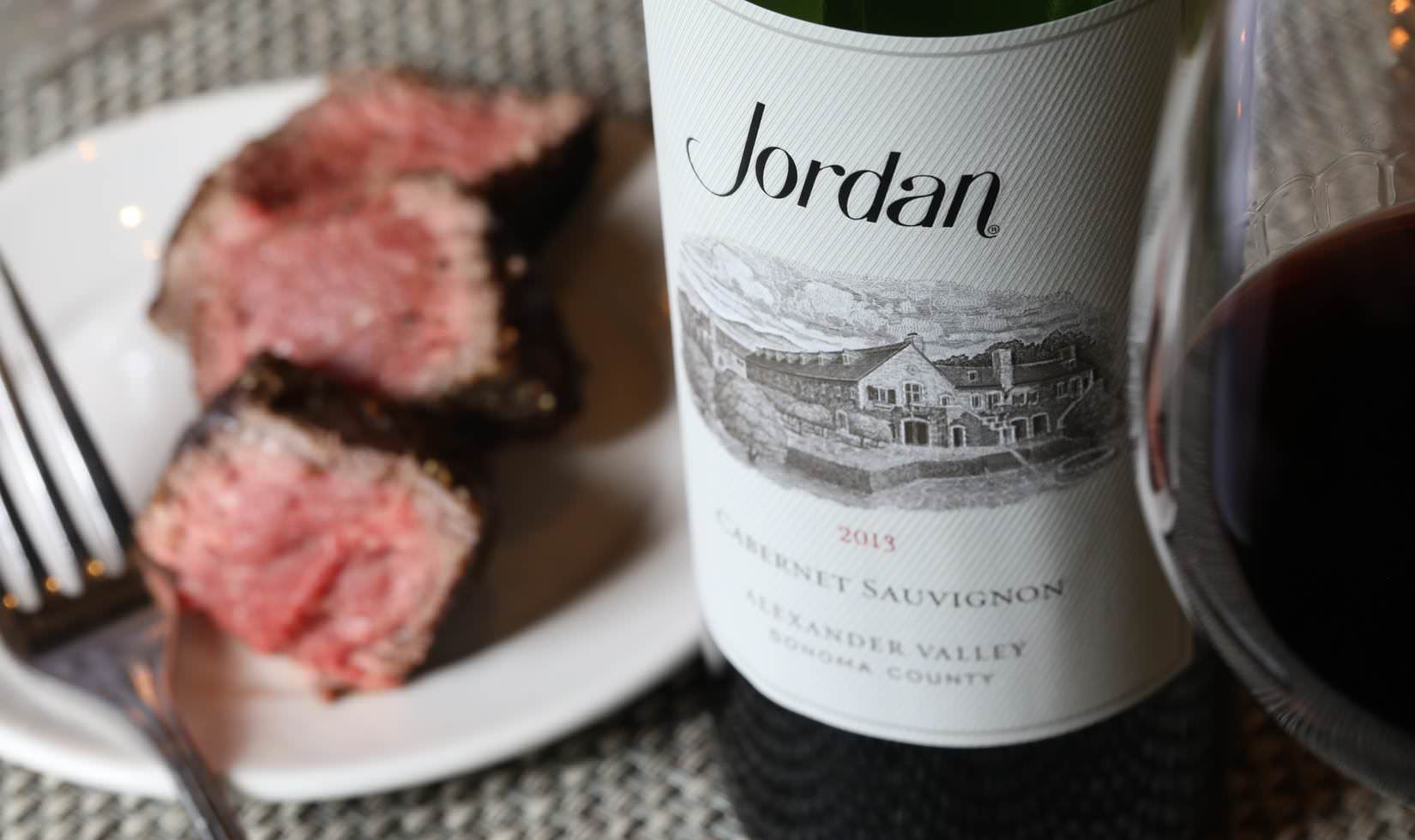
More flavorful cuts of beef, such as ribeye and butcher cuts (flank, hanger and flat iron), typically pair best with fruit-forward, younger cabernets with more tannin. More flavorful, bigger the steak, the better the chance it will pair with a big cabernet.
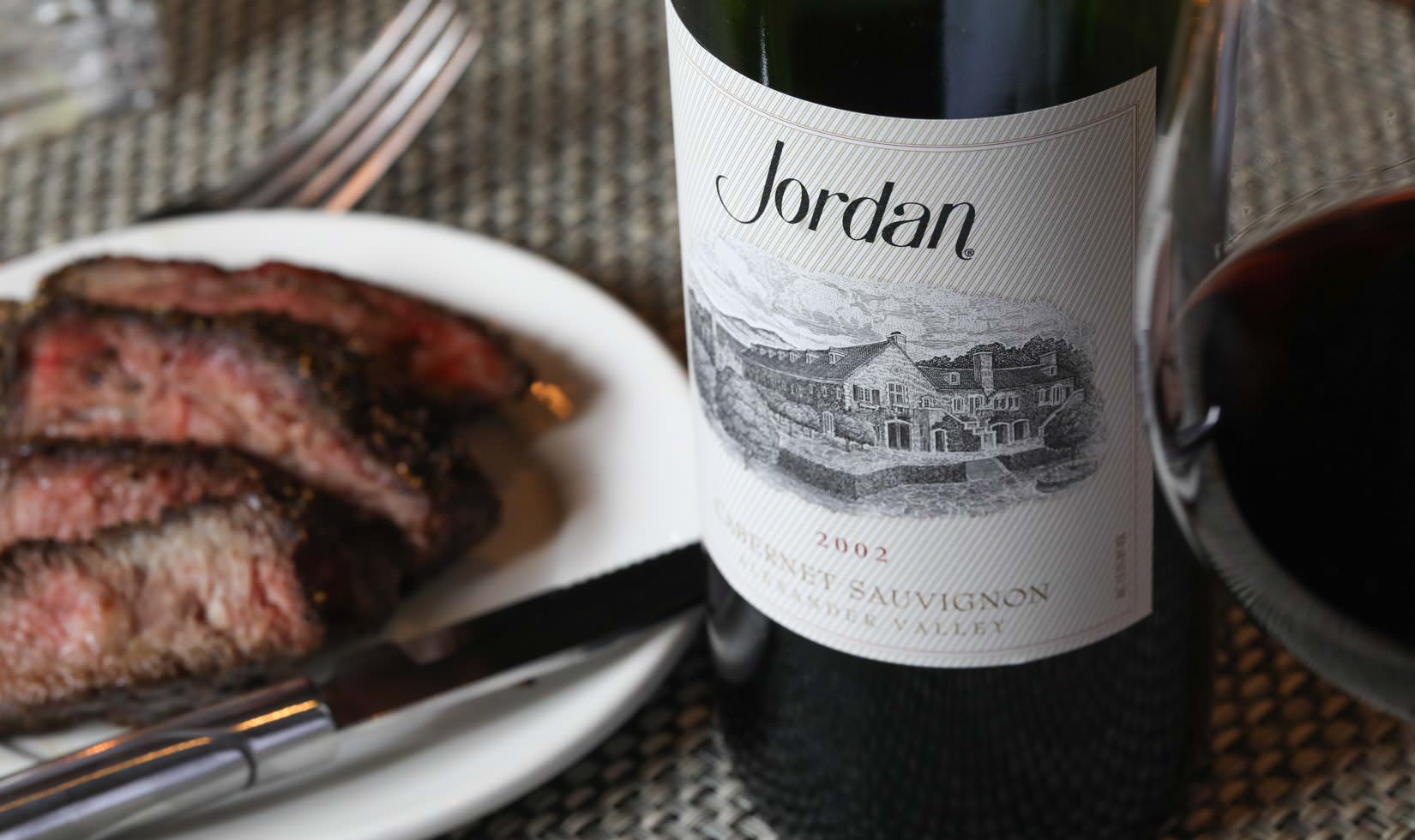
Older cabernets, which has less tannin, create a food and wine pairing where the wine’s more subtle fruit and spice flavors are elevated by the fat, protein and peppery spice in more flavorful cuts, such as ribeye and flat iron. This makes for a very attractive pairing that can be favored to the equally enjoyable pairing of a younger, more tannic cabernet.
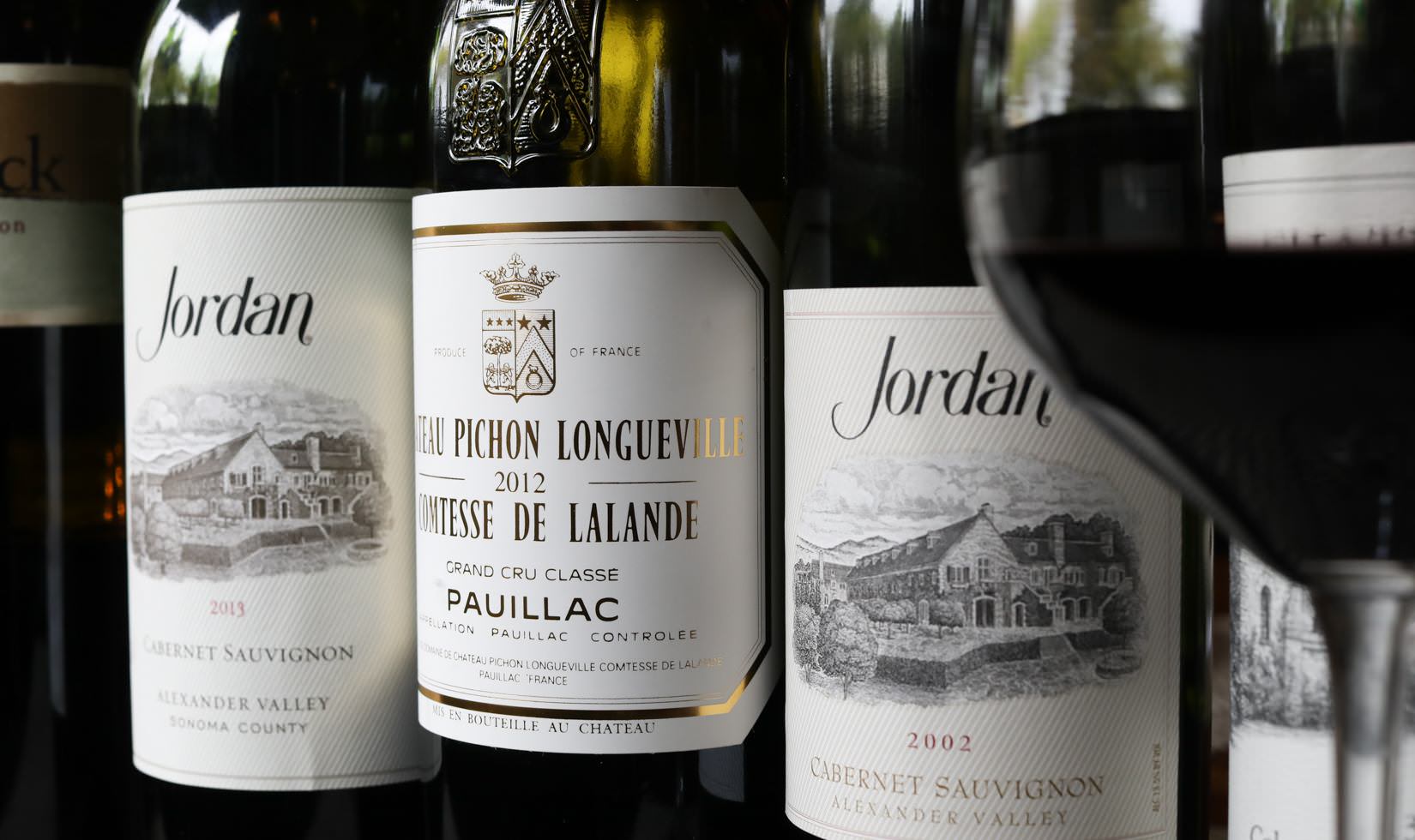
Balanced cabernets—young and old—with lower alcohol, firm acidity and silky tannin are the safest bets—the most versatile wines with different cuts of steak.
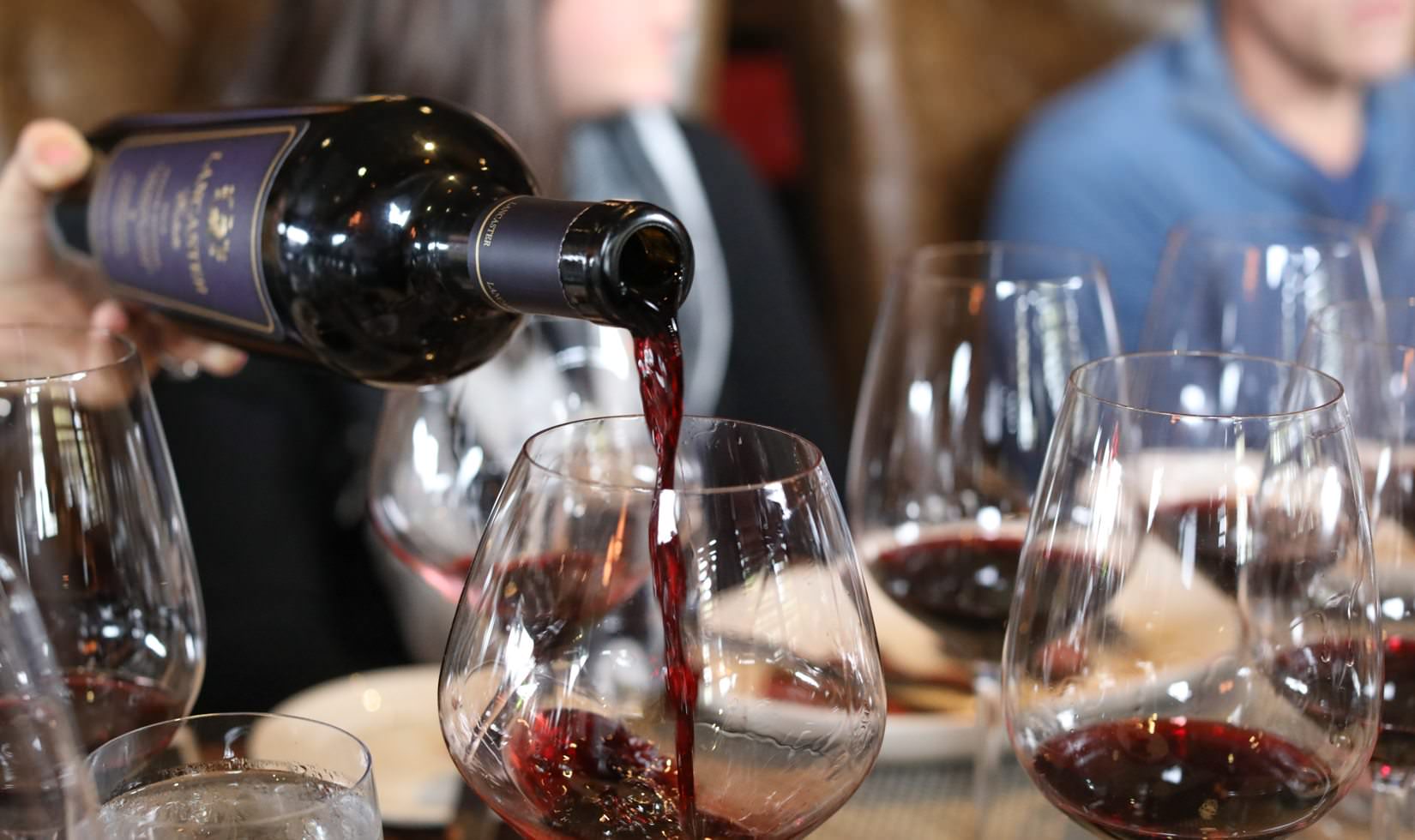
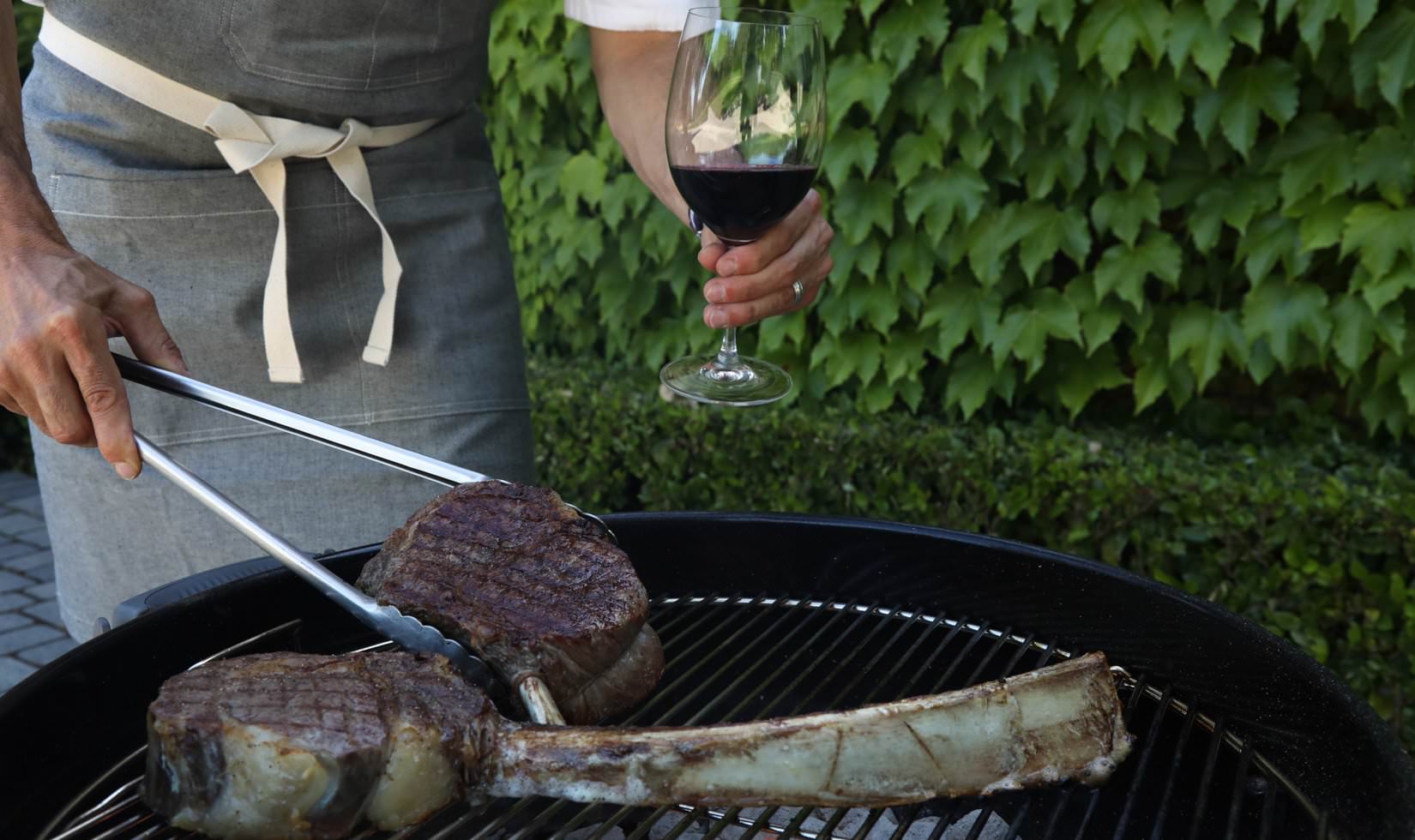
Grilling is a great tool to help different cuts of steak pair with different styles of cabernet. Grilled steaks with a thick char best pair with big, bold cabernets. The char masks the excess of tannins. If you prefer this style of wine, leave some fat on your steak and give it a good char (with fresh pepper) to help the steak stand up to the powerful wine. Chargrilling also complements the subtle nuances in cabernet that come from its toasted oak barrels.
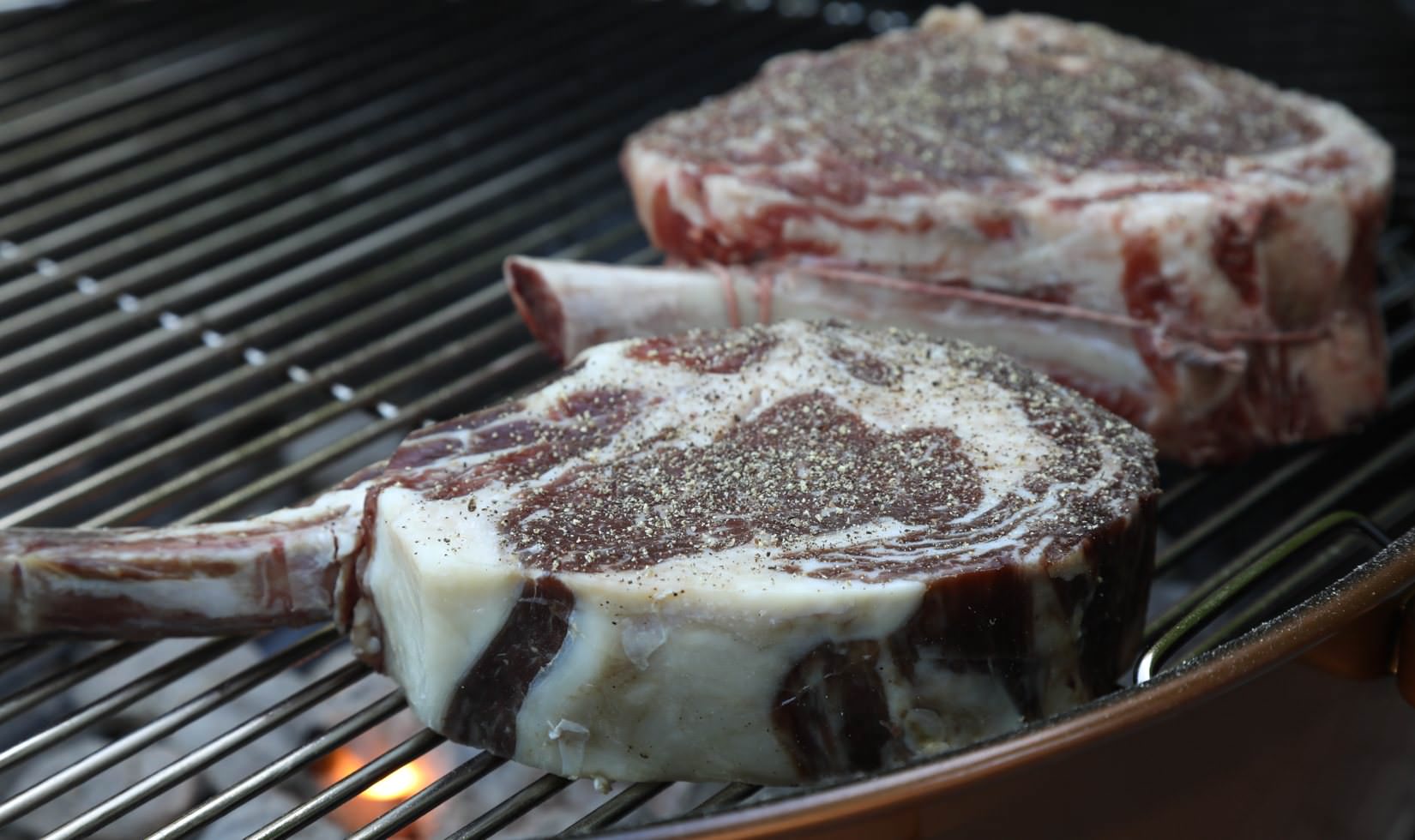
Seasoning steak with pepper helps complement the natural, herbaceous and spice notes found in cabernet sauvignon. Benjamin Appleby, wine & beverage manager at Abe & Louie’s in Boston, explains it this way: “What makes cabernet sauvignon especially well-suited to steak is the peppery aroma unique to the variety that comes from pyrazines. As cabernet grapes ripen, the character of that pepper evolves along with the tannins and acidity to become, generally, softer. So, my rule of thumb is to pair fruitier, lusher wines with leaner cuts, and more structured, less ripe wines with the juicy steaks that can handle a bit of extra pepper.”
As always, the pleasure of food and wine pairing is subjective, and what’s most important is to drink the wines you love with the people you love for a memorable pairing. Hopefully these tips, however, will you find a new favorite meal for your table. (Hanger Steak and Asparagus Salad is one of my personal favorite recipes for pairing with an elegant cabernet.) And if they leave you hungry for more, pour yourself a glass of cabernet and peruse our detailed cabernet and steak tasting notes from the restaurants, wines and steaks included in this experiment.
What is your favorite steak and wine pairing? Please leave us a comment.
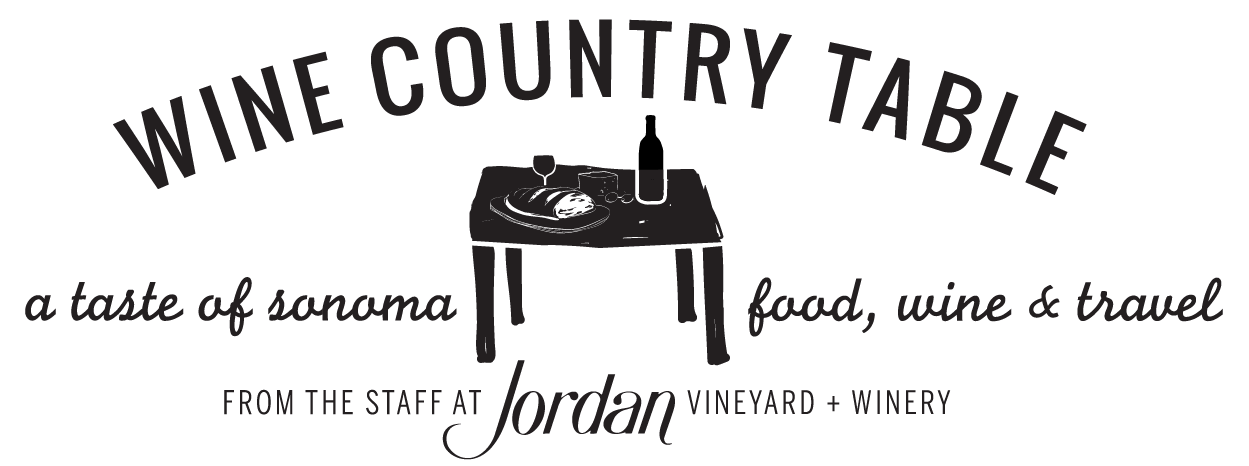



Pingback: Food and wine pairing at the top Cape Town restaurant – La Vista Restaurant
Pingback: Blog – La Vista Restaurant
The wine can be experienced in more rich way when paired with foods. I like roasted food. In last month I paired carbernet sauvignon wine with buffalo slider! And ii was great idea, my friends loved it. It was Assemble slider buns and top burger with grilled onions and crispy bacon. It had crisp onion fried, tomato and the toasted buns with butter were golden color. The taste of ground buffalo seasoned with salt and pepper was just mouth watering and on the top of it had blue cheese to the top of the patty. I had the Napa Valley wine Carbernet Sauvignon to pair with.